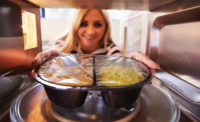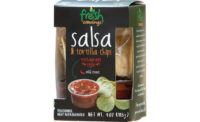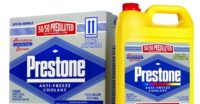On-the-Go Packaging for the "Go-Go" Generation
On-the-Go Packaging for the “Go-Go” Generation
By Aaron Brody
Much of our population today is on the go: racing from appointment to appointment, filling health clubs and soccer fields, and above all, constantly moving. Food marketers are addressing the challenge of feeding this mobile mass with food and drink engineered for consumption on the run. Packaging designed for this movement must be easy to access, and easy to close, reopen and discard.
Water and fruit juice
Perhaps the most ubiquitous of the “go-where-no-man-has-eaten-before” packages are polyester water bottles—the essence of portability. Boasting spouts that open and close with a twist, these transparent, almost unbreakable, bottles are part of the flow of America. And almost every one is engineered to fit into the beverage cup carrier in our cars, treadmills and stair climbers.
A more recent introduction is the aluminum bottle, which can be outfitted with a screw cap closure and adds needed reclosability to metal packaging in the juice and fruit beverage category. Plastic has also been penetrating these large and growing categories, spawning a new generation of flavored milks in take-along bottles.
Soup
In the battle for the stomachs of busy consumers, the soup category has presented many packaging formats. Campbell’s Soup at Hand is a concept that permits drivers or passengers to sip microwave-heated soup directly from the package, which also fits the automobile cup holder. The plastic container is fitted with a skirted overcap that incorporates an opening through which the hot soup may be sipped while on the go.
Semi-solids
A few years back, the introduction of yogurt in a flexible tube sparked a stampede to package foods in squeezable tubes. Squeezable pudding sprang into the marketplace, as have flavored peanut butters kids can eat out of the tube.
And just when we thought that pre-sliced peanut butter was America’s greatest contribution to comfort food, along came the ultimate: parallel tubes of peanut butter and jelly to simultaneously slather on bread.
Vegetables
Fresh-cut salad vegetables are also transforming themselves to take advantage of the on the go trend; such packaging is transitioning from “bagged” to packaging that is engineered as the actual eating device. For example, carrot and/or celery sticks in one compartment and dip in another of a lunch-box-sized plastic tray are snack fare for those who favor the “healthier” route.
Another innovation is the salad-bowl-for-one, which contains cut greens in the main thermoformed polyester base and dressing, toppings and even meat accompaniments in a compartmented polyester insert that rests atop.
Cookies and salty snacks
In the dry sweet baked goods categories, there are polyethylene cups with narrow bases that fit automobile and baby stroller beverage cup carriers. Consumers peel back the lidding, remove cookies from the cup, and simply close the package with a plastic overcap until next use.
Salty snacks are also moving a portion of their offerings towards canisters and other structures engineered to fit the car cupholder. Because some barrier plastic canisters are too tall for “hand dipping”, the package tops are designed to double as serving cups themselves. BP
The author, Aaron L. Brody, Ph.D., is President/CEO of Packaging/Brody Inc., a consultancy in food, packaging technology and marketing. Contact Dr. Brody at 770.613.0991 or aaronbrody@aol.com
Looking for a reprint of this article?
From high-res PDFs to custom plaques, order your copy today!








